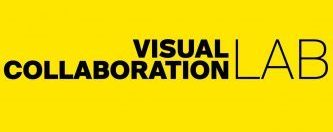The visual collaboration lab is located at HEC Lausanne, University of Lausanne, Switzerland and headed by Pr. Stéphanie Missonier .
Our research focuses mainly on the development of visual collaborative tools that aim at supporting team in solving problems and/or innovating.
What are visual collaborative tools?
Visual collaborative tools have recently emerged and gained popularity to innovate and/or address problems collaboratively within teams (Avdiji et al., 2018). By providing a shared language and/or a shared visualisation (Bresciani and Eppler, 2009; Comi and Bresciani, 2017), they support several challenges of collaboration related to sense-making and sense-giving and action planning in multi- or transfunctional teams. One of the goals of these tools is to assist teams to explore and/or brainstorm on a given problem. This is especially useful in processes which need to generate new options and alternatives through design. These tools allow for better structuring and bounding of a problem and facilitate solution searches in innovative ways during collaboration (Osterwalder and Pigneur, 2010; Van der Pijl et al., 2016).
Research programmes
The Agile Transformation Canvas
The Agile Transformation Canvas is a visual and collaborative tool designed to help teams navigate and drive their journey towards agility. By focusing on both current practices and future aspirations, this canvas supports discussions around team culture, goals, and obstacles. Whether you are initiating a large-scale agile transformation or refining your team’s approach, this canvas provides a structured yet flexible framework to support your efforts. Click here to learn more.
Involved members: A. Roschnik and Prof. S. Missonier
What narratives for ecological transformation? (re)Thinking technosolutionist and apocalyptic imaginaries for a more sustainable society
This project aims to analyze the impact of two types of dominant narratives – technosolutionist narratives and apocalyptic narratives – on the ecological and social transformation, with a particular focus on the cultural and economic/managerial fields. By collecting and studying data from these two fields, and adopting an action-research approach, the project will intervene in the secondary and university education sector.
The aim is to develop tools for deconstructing dominant narratives that would be demobilizing and potentially disempowering – « technology will solve everything » and « all is lost » – and to promote the emergence of alternative narratives carrying action and hope (so-called « earth narratives »). To learn more: visit the project website and watch the presentation video.
Involved researchers: Stéphanie Missonier (HEC), Estefania Amer (HEC), Raphaël Baroni (Lettres), Grégoire Zimmermann (SSP), with the collaboration of Marc Audétat (SSP) and PhD student Hans Durosier (HEC).
Tools to collectively solve wicked-problems
In 2017, we worked on a theorisation of these new types of management tools such as the Business Model Canvas, the Value Propositions and the TAM – Team Alignement Map. We named these tools Visual Inquiry Tools and developed a new theory : the Design theory for Visual Inquiry Tools. This theory aims to 1) provide solid theoretical foundations in view of the abundance of such type of tools in the professional environment and 2) help researchers and practitioners to develop such visual tools to collectively solve complex managerial issues.This research led to the creation of this visual collaboration lab and publications in: an A-ranking journal in information systems : Journal of the Association of Information Systems (JAIS), several conference papers, specific track over 2 years in a large international information system’s conference (HICSS).
Involved members: Prof. S. Missonier, Prof. Y. Pigneur, Dr. H. Avdiji, and Dr. D. Elikan
